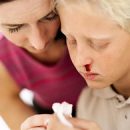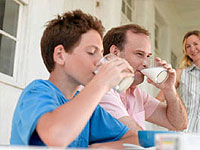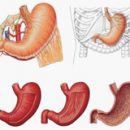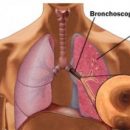ADVI in adult - unpleasant, but tolerant. But the sick child causes a special state of anxiety and experience. How the ARVI flows in children up to year? What are their danger and what to do baby parents?
Content
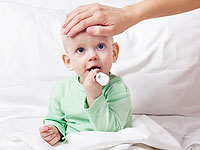 Acute respiratory diseases — A collective concept denoting infectious diseases of the respiratory tract caused by various viruses: influenza, paragrippa, respiratory syntial, rinovirus and adenoviral infection. All OSRs have similar symptoms and «Forced» Kids snap spouts, blow the nore, coughing and suffer from high temperature.
Acute respiratory diseases — A collective concept denoting infectious diseases of the respiratory tract caused by various viruses: influenza, paragrippa, respiratory syntial, rinovirus and adenoviral infection. All OSRs have similar symptoms and «Forced» Kids snap spouts, blow the nore, coughing and suffer from high temperature.
For what reason, the viruses causing ARVI in children up to a year and older, divided the respiratory tract among themselves, leaving «favorite place»? Rinoviruses settled in the nasal cavity, influenza viruses and paragrippa «stalked» Gortan, Adenovirusi — In the lymphoid tissue of the pharynx, the conjunctiva of the eyes and lymph nodes, and the causative agents of respiratory syntial infection have chosen a secluded corner — Lower respiratory tract. Such an attachment of viruses to the place of favorite habitat identified a typical clinical picture for various types of ORVI.
As for age preferences, in the first months of life, children rarely suffer from ORI, affects the presence of immunity, who passed to them from the mother. Crumbs on breastfeeding quite rarely suffer from viral respiratory tract infections, more often you can meet OVI at a one-year-old child or baby older.
General features of ARVI in children
Whatever the causative agent was caused by a sharp respiratory disease, there will always be symptoms of general intoxication caused by inflammation of the inflammable organs of affected organs and the spread of the kid's body virus.
ARVI in an ingred child proceeds with a body temperature up to 38-39 0With, pallorium or redness of skin, sweating, anxiety, fusibility, deterioration of appetite, runny nose and cough. ORVI feature in children up to a year is chair disorder, diarrhea, accompanied by bloating and abdominal pain.
These common symptoms for all OSRIs are joined by private manifestations of infections depending on the type of pathogen.
Adenoviral infection in children
In connection with the favorite localization of the adenovirus in lymphoid fabric, respiratory infection manifests itself:
- damage to the nose, pharynx, development of rhinitis and pharyngitis, mortgage and mucous discharge from the nose, an adsadous cough;
- viral angina with redness of the throat and an increase in the almonds;
- an increase in submandibular and cervical lymph nodes;
- conjunctivitis — redness of the eyes, tear, sticking eyelashes after sleep.
Sometimes adenoviral infection is accompanied by an increase in the spleen and the appearance of a small, quickly disappearing rash. For adenoviral infection, a typical cyclic flow, it is weakening, it appears again, each time the manifestation becomes less significant and, finally, the disease fades.
Paragripp in children up to year
Paragripp is characterized by symptoms of laryngitis. Often due to the physiological narrowness of the respiratory tract, the children develop a false croup — Inflammatory larynx swelling, leading to difficulty breathing and suffocation. A bout of cereals with ORVI at a one year old child usually occurs in the evening or at night. The child is disturbed, the barking cough appears, whistling breathing is difficult, sometimes goes into the suffocation with the formation of the skin and mucous membranes. Condition requires emergency care.
Respiratory-syntial ORVI in an infant
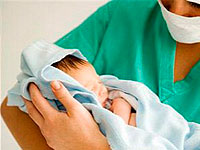 This type of ORVI, which children are sick up quite often, is characterized by the defeat of the lower respiratory tract — Small bronchi and bronchiole. Bronchiolite and pneumonia are difficult, accompanied by respiratory disorders. The infection develops quickly, respiratory failure appears in a few hours: breathing difficult, whistling on exhale, shortness of breath, leather and mucous membranes acquire a shiny
This type of ORVI, which children are sick up quite often, is characterized by the defeat of the lower respiratory tract — Small bronchi and bronchiole. Bronchiolite and pneumonia are difficult, accompanied by respiratory disorders. The infection develops quickly, respiratory failure appears in a few hours: breathing difficult, whistling on exhale, shortness of breath, leather and mucous membranes acquire a shiny
Tint. The condition of the baby becomes hard if you do not help on time, it can perish.
Rinoviral infection in children
Rinoviruses cause the development of rhinitis and rinopharygitis, accompanied by a runny nose with abundant watery, and then mucous-purulent discharge and nasal congestion. Infection proceeds against the background of normal or slightly elevated temperature. However, in children, it is often complicated by sinusitis, Eusthaitis, otitis, sometimes leads to a barrel and pneumonia. Therefore, in any case, it is important not to engage in self-medication, but to show the child to the doctor.


